Rio de Janeiro(Estadio do Maracana)
On 1 January 1502, the Portuguese explorer Gaspar de Lemos brought his ship into a bay on the Brazilian coast, which is now called Guanabara Bay. Mistakenly confusing the bay with the mouth of a river, he named it Rio de Janeiro - literally translated as the January River.
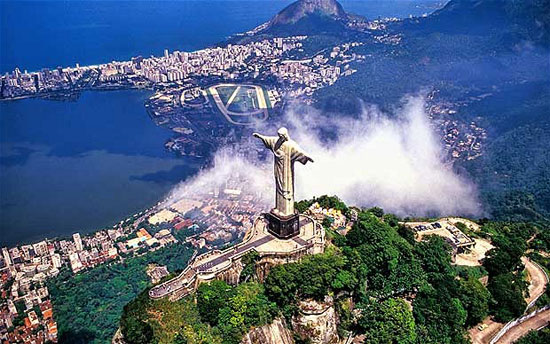
The city of Rio de Janeiro itself was founded on 1 March 1565 by Estacio de Sa, and was the seat of Brazilian politics from 1764 until 1960, when it was replaced by Brasilia. Nonetheless, Rio remains Brazil's most popular tourist destination and cultural hotspot, besides being the country's second most populous metropolis with just over 6 million residents.
As well as its incomparable natural beauty, Rio's rich history and the cariocas' contagious joie de vivre have all contributed to making the city known and loved across the globe. The highlights of the Rio calendar include the New Year's Eve celebrations and world-famous Carnival. This bustling metropolis, located between a tropical forest and a series of magnificent beaches, is an ideal base for exploring either, while the Cidade Maravilhosa has everything fans of modern urban life could wish for.
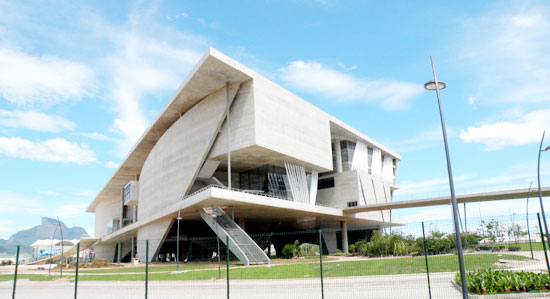
Rio de Janeiro is without doubt a city packed with contrasts: its striking colonial architecture recalling a bygone era while its imposing modern buildings represent a bright future. Perhaps the two most iconic sights are the Sugarloaf Mountain and the statue of Christ the Redeemer, which sits atop the Corcovado Mountain, these images winging their way around the world on the front of millions of postcards.
Football
Rio de Janeiro is the very depiction of Brazilian football with all forms of kick abouts taking on its streets, public parks and vast beaches. It comes as no surprise, then, that the city is the birthplace of such world-renowned footballers as Jairzinho, Zico, Ronaldo and Romario, to name but a few.
Four of Brazil's biggest and most popular clubs are based in the Cidade Maravilhosa: Botafogo, Fluminense, Vasco da Gama and Flamengo, the club with the country's biggest fan base, of over 30 million aficionados.
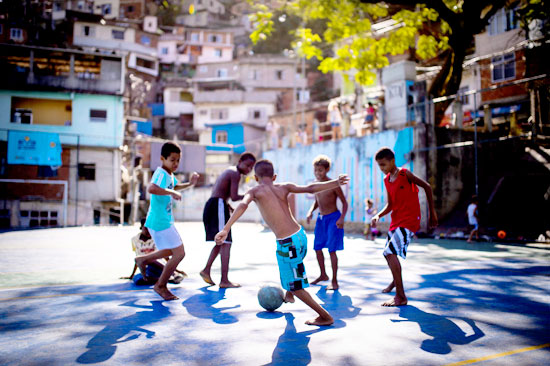
Football is like a religion for the cariocas, and its temple is undoubtedly the mythical state-owned Maracana, arguably the most famous and once the largest stadium in the world. Officially named Mario Filho Stadium, after a famous sports journalist, the Maracana was inaugurated shortly before the 1950 FIFA World Cup in Brazil and hosted five of the home country's six matches in that competition, including the fateful 1-2 loss to Uruguay in the final match of the tournament. The resounding defeat on 16 July 1950 - dubbed Maracanazo by world champions Uruguay - was to be forever remembered as a national disaster in Brazil.
The Maracana has been completely renewed for the FIFA World Cup, in order to offer absolute comfort while still being the largest stadium in Brazil as a 75,117-seater.
The Engenhão, which was built as a venue for the Pan-American Games in 2007 and will be used in the 2016 Olympic Games, is the home ground of Botafogo. Vasco owns the São Januário, a stadium built in the 1920s that was the largest in the country before the Maracanã was opened.
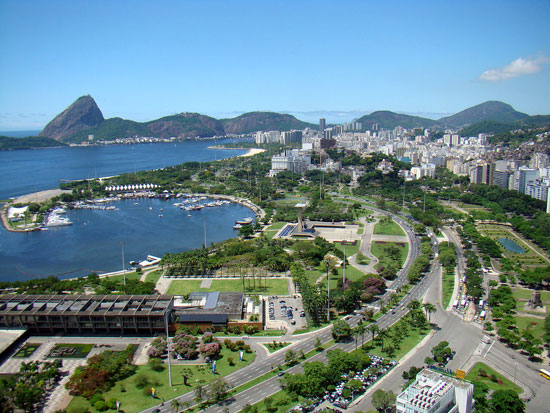
Owner: CR Flamengo (RJ), Fluminense (RJ)
Capacity: 76804
Country: Brazil
City: Rio de Janeiro
Address: R. Prof. Eurico Rabelo, Maracanã, Rio de Janeiro - RJ, 20271-150, Brazil
Value: About $500 million
Inauguration: 1950
Average temperature in June: 22°C
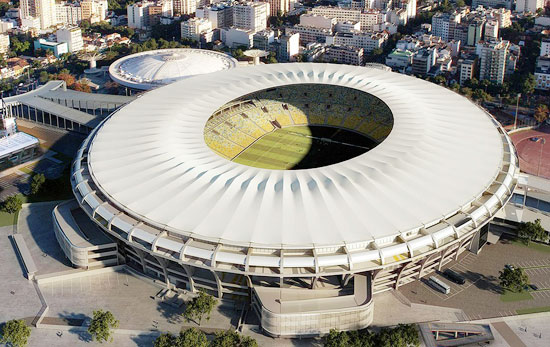
Profile:
Built for the 1950 FIFA World Cup Brazil™, the Estadio Jornalista Mario Filho, better known as the Maracana, provided the venue for that year’s truly memorable decider between the host nation and Uruguay, one of the most dramatic chapters in the history of the competition.
The Rio de Janeiro stadium will be in the limelight once again at Brazil 2014, hosting seven games in all, more than any other venue. Among those matches will be the Final on 13 July.
Once the largest stadium in the world, packing in crowds of up to 200,000 – among the highest attendances ever seen in the history of the game – the Maracana now has a reduced capacity of 73,531 for Brazil 2014. It remains, nevertheless, the country’s biggest football ground.
Respecting the original layout of the stadium, the project for its refurbishment included the demolition of the lower ring of seats, the construction of a new ring offering improved visibility, the expansion of the access ramps and the replacement of all seating. The stadium is also be fitted with a new roof complete with a rainwater collection system. The facade, which has been listed by the National Institute of Historical and Artistic Heritage, remains untouched.
Rio’s second most popular tourist attraction, the Maracana continued to attract football fans from all over the world, even as it underwent renovation. Visitors to the stadium could watch work unfold from the Torre de Vidro (Glass Tower), built especially for the occasion, and could even take a piece of the old stadium away with them as a souvenir.
Matches:
15/06/2014 19:00 Argentina vs. Bosnia-Herzegovina
18/06/2014 16:00 Spain vs. Chile
22/06/2014 13:00 Belgium vs. Russia
25/06/2014 17:00 Ecuador vs. France
28/06/2014 17:00 Round of 16 1C vs. 2D
04/07/2014 13:00 Quarter-finals W53 vs. W54
13/07/2014 16:00 Final W61 vs. W62
Local hero:
Ronaldo, Romario and Zizinho (described by Pele as the best player he ever saw) are among the many football Gods born in Rio. But for a certain generation Zico, the maestro of the 1982 World Cup, is the definitive Brazilian footballer. He was recently voted third behind Pele and Garrincha as the nation’s greatest.

Legends pay tribute to Gerrard & Lahm
International retirements follow Wo...
- Year
- Winner
- Runner-up
- Third place
